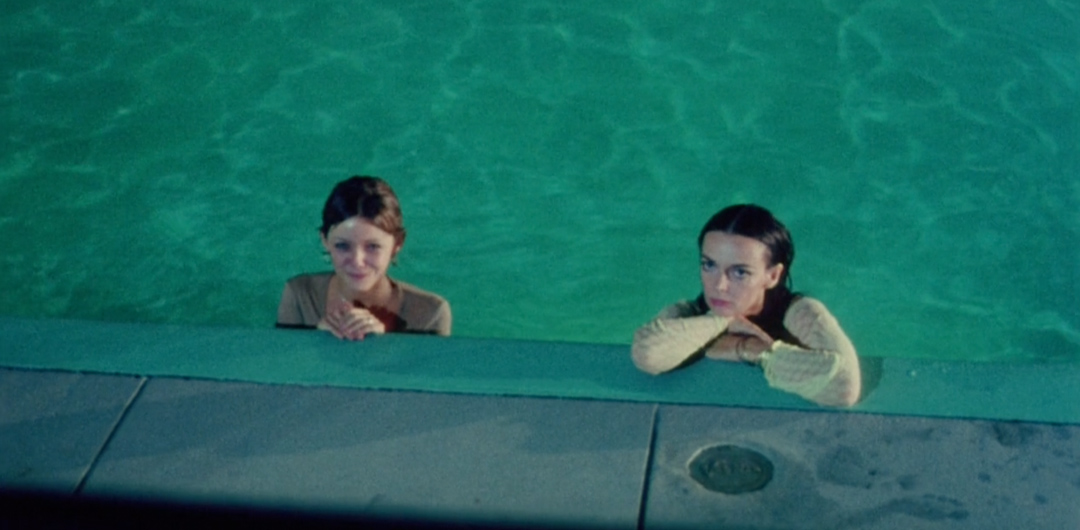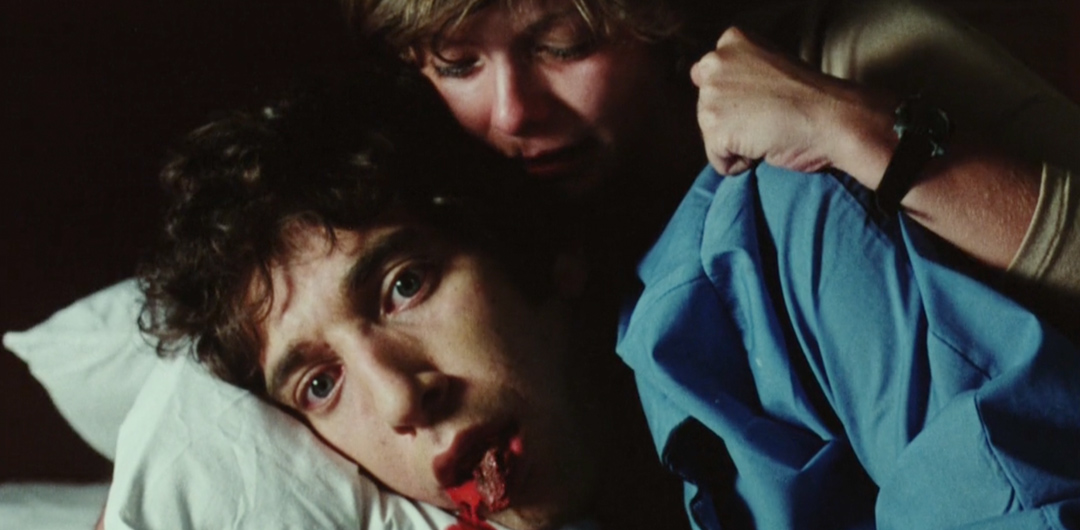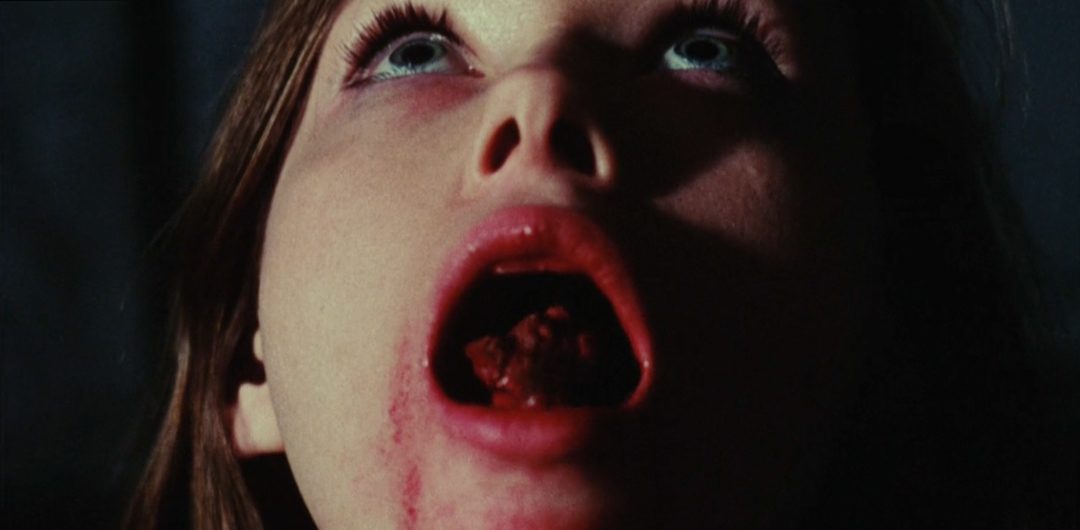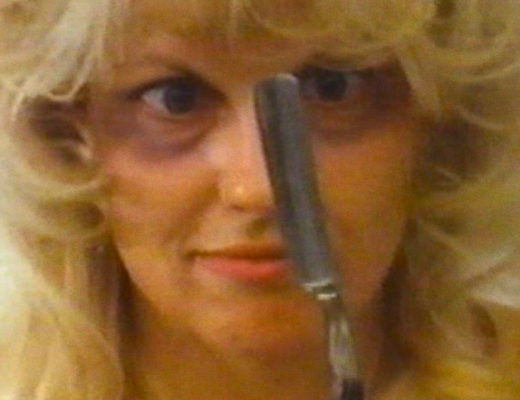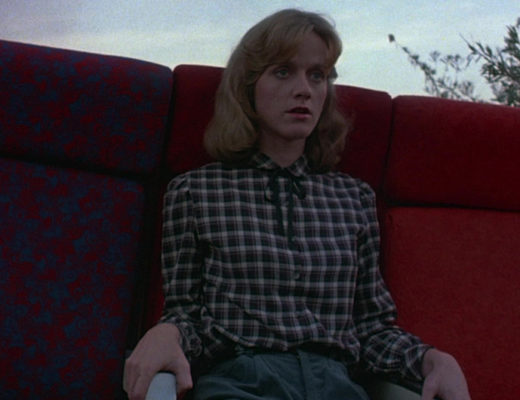Did you know that there’s a parasitic fungus that turns ants into zombie slaves? It takes over an ant’s brain and causes it to climb up a plant where it clamps its jaws onto a leaf. Eventually the ant’s head explodes and the fungus spores sprinkle down onto more ants. The process starts again. This is an actual thing that happens in actual nature.
Did you know there’s a parasitic leech that turns humans into zombie sex slaves? It crawls into their bodies and takes over their brains, causing them to thrash and vomit blood and then get down with reckless abandon. This is an actual thing that happens in an actual movie.
Like most of the world’s worst problems, it all starts with a white man. A mad scientist decides that “Man is an animal that thinks too much; an over-rational animal that’s lost touch with its body and instincts.” So he develops a parasite which is a combination of an “aphrodisiac and venereal disease that will hopefully turn the world into one beautiful, mindless orgy.”
Well, he succeeded.
Welcome to Starliner Terrace: a luxury condo before luxury condos were labeled as luxury condos. There’s tennis courts, swimming pools, 24-hour concierge, and furnished apartments with fully appointed kitchens with electric ranges, which for the record, I hate. Gas ranges, ride or die. There’s also on-premise dental and medical services and a guy who enjoys pickles. I, too, love pickles.
The parasite breaks free and wreaks havoc in the building. Women and children get attacked while making a casserole or waiting in an elevator. Security officers get a kiss of death. Everyone has turned into horny toads, even the elderly; they make group love in the lobby. Wine is poured. Phone lines are cut. Clothing is ripped. Like zombies, there’s an undeniable hunger for flesh, but in a more carnal knowledge way.
Shivers is one of my favorite horror films of all time. It’s canon and for many reasons, I come back to it more than David Cronenberg’s other works. While The Fly or Videodrome are generally considered to be his finest and shiniest (and they are), Shivers shows his path toward his most seminal and beloved works. He tries out a lot of ideas here—soap opera melodrama, surrealist cinematography, pearl-clutching exploitation, homages to Night of the Living Dead—which makes the film feel disjointed, though still unmistakably Cronenberg. This is why I find Shivers to be one of the most interesting in his career; you see the effort and the ambition in a different way. It’s got simple, but well-executed body horror effects (pulsating beasties emerging from torsos), social commentary (modern life is a trap), and poetic waxings (“Dying is an act of eroticism”), and you can see how these themes will continue and build through his subsequent films. But Shivers also has elements that Cronenberg doesn’t return to, namely the surprising moments of humor (calling a half-eaten pickled “used”). While we think of Cronenberg movies as being bleak and relentless (because they are), Shivers is actually pretty funny at times. A History of Violence is not.
While some might consider this movie as a warm-up to the genius that’s to come, it doesn’t mean Shivers itself is not genius. There’s an ominous tone and tension that builds methodically and explodes in violence, sexual assault, and exploitive content that’s a bit risqué even today. The content feels less Canadian and more Italian—but not too Italian. This film is also gorgeous. You can pause on any scene and it’ll be perfect in its framing; ripped pantyhose, blood-stained mouths, bare feet stepping on a broken wine glass. It’s stylishly shot, but never distracts. You catch glimpses of Kubrick and the Overlook Hotel here, only it’s a luxury condo with a dimwitted security guard. The effects in Shivers are cheap; the parasitic leeches look like little turds. But truth be told, they don’t get much screen time for a movie that’s actually about them. It’s as if Cronenberg knew the effects couldn’t be pulled off well, so he nimbly edited around it and made up for it using other techniques. The result is that there’s dread and terror with only a few beasties. This is a man who worked within his means and remained ambitious, but reasonable. Meaning, there’s restraint. I would never call The Brood restrained.
Shivers was years ahead in the genre, and offered a fresh twist on zombies at a time when people were still ripping off ideas wholesale from George Romero. But what I love most about Shivers is the supporting cast and the extras that only appear a handful of times. These are actors chosen not for their looks, but for something odd that sets them apart: hooked noses, wide-set eyes, broad foreheads, thick necks. They delivery their lines stiffly and dully, giving the movie a surreal sheen. They don’t even seem like actors, just regular people plucked from the streets of Canada. With the exception of the leads, no one is traditionally good-looking, yet everyone is absolutely magnetic. While they bumble and mumble, the camera hangs on their faces so you can soak in sagging cheeks, long chins, and lifeless eyes. Except, of course, Barbara Steele. What a babe.
“I’m hungry for love!”
